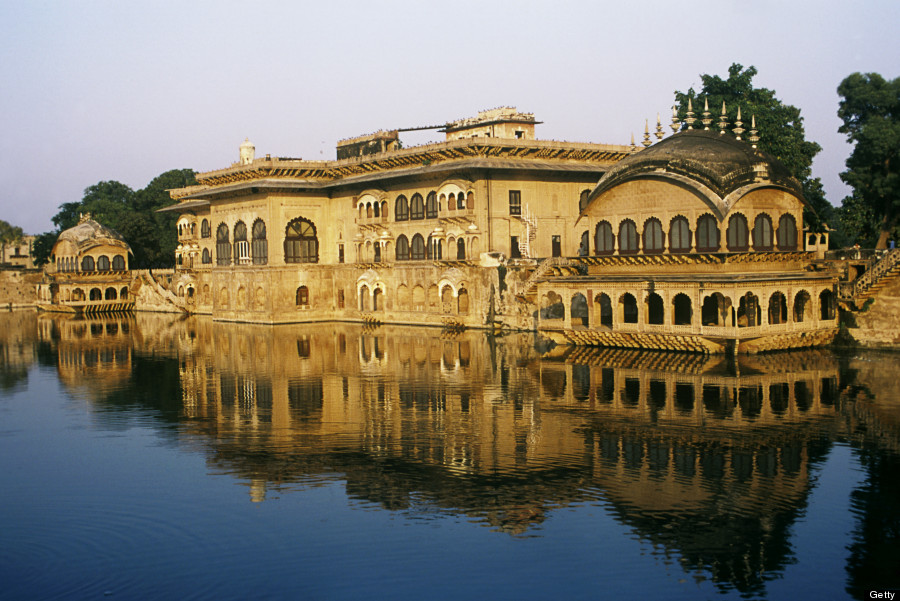
Ever wonder how Rajasthani royalty kept cool in the desert heat? The lucky ones headed to Deeg Palace, an ingenious summer resort built north of the Taj Mahal in 1772. In operation until the 1970s (today it is a tourist site), Deeg was designed to cool its occupants into a state of bliss. A series of tanks and canals cuts through the stone and marble grounds, the latter studded with tiny jets. From this watery network rose a steady mist, recalling the monsoon.
Above were even cleverer tricks. Hundreds of metal balls rolled in gutters on the roofs to create the illusion of thunder. On an upper level, a strategically placed window opened toward a field of fragrant herbs whose smell wafted in when strong seasonal winds blew.
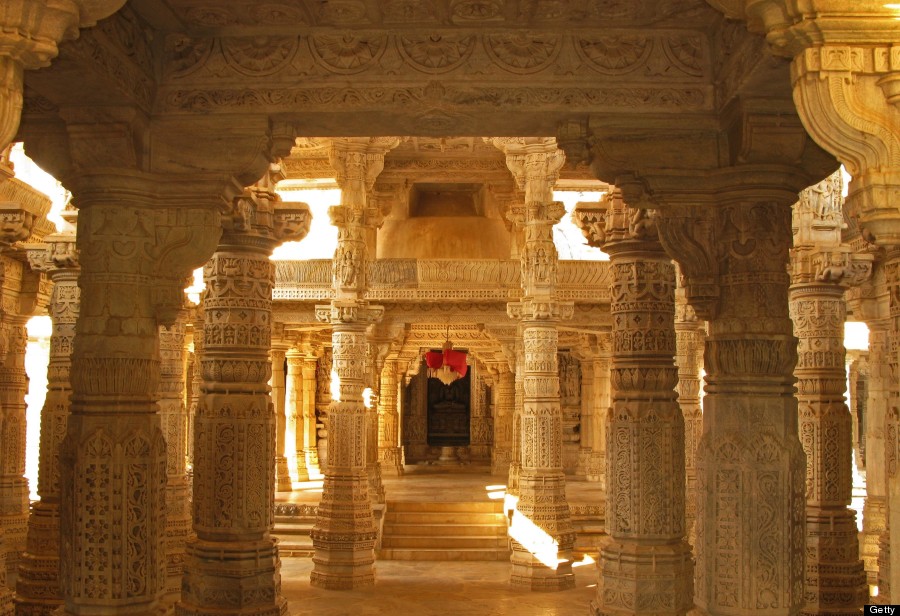
In the northern Indian village of Ranakpur rises a 15th century structure of no walls and so many pillars, it’s said you can’t count them all. Also called Ranakpur, the Jain temple is considered one of the world’s most beautiful. The intricate pillars are carved of white marble, and no two are alike (the closest you’ll get to an official count puts them at 1,444). Inside the space they make, a statue of a multi-headed, many-tailed snake is frozen in motion. Visitors must walk barefoot out of respect, on marble floors cool from the perpetual shade. In a country of heat and light, this architectural detail alone constitutes a religious experience.
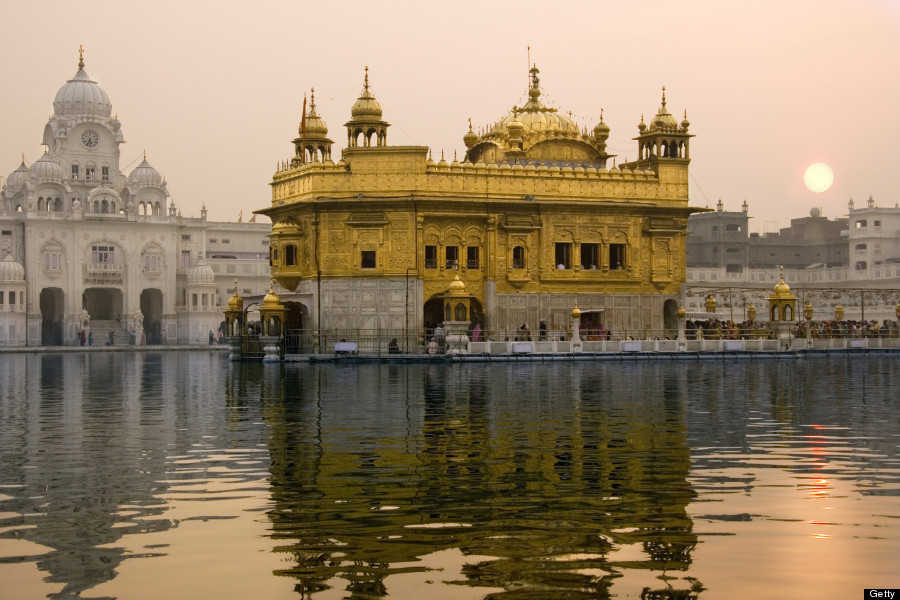
Shovel hit soil in 1577. A half century later, the Golden Temple of Amritsar was complete, shimmering and sunk into the ground to represent a religion distinct from Hinduism, whose temples sit on hills. Today it is the best known Sikh temple in the world, with doors on four sides to encourage all to enter. Carved lotus petals and cusped arches bridge Muslim and Hindu architecture, and the facade (made of more than 1,500 pounds of gold) gives it an ethereal, extravagant glow.

The lotus is first mentioned in Indian lore in the Vedas, the ancient Hindu text. From the eight-petalled flower sprung the universe. Elsewhere, the structure is compared to the human heart, an idea echoed in Chinese philosophy. The flower’s cross-faith appeal (Buddha’s seat is a lotus) explains the shape of the last of the world’s seven Bahai temples, built in 1986. Bahai followers believe in the goodness of all religions, and their temples are famously beautiful. In Delhi, the Lotus Temple is composed of inner and outer “leaves,” which protect an interior hall. Nine pools stretch from the center, each arrowhead-shaped, to reference the flower’s floating leaves. We dare you to enter and not convert on the spot.
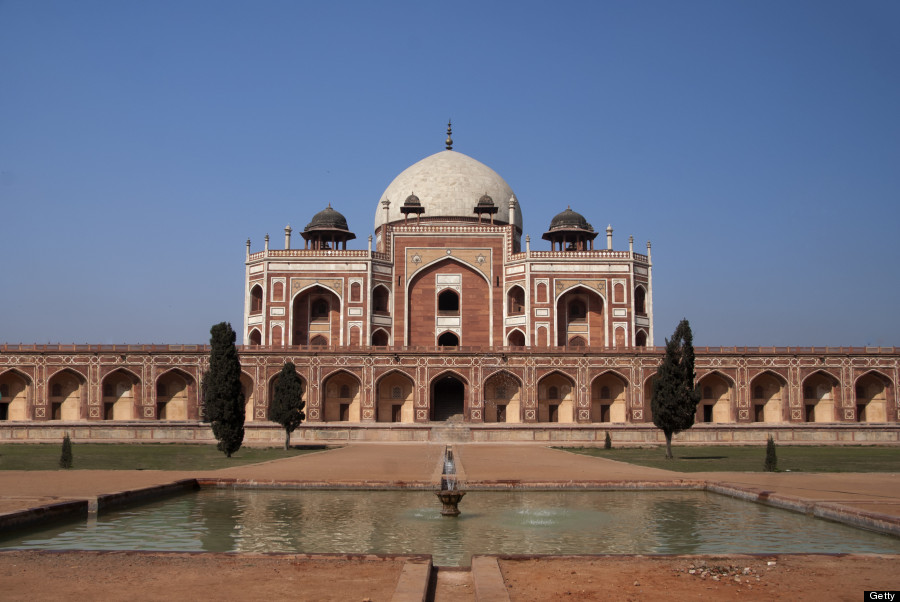
Mausoleums are high art in India, home of the world’s greatest. But before Shah Jahan beat all the other husbands in perpetuity by erecting the Taj Mahal as a tomb for his beloved wife, there was Humayun’s Tomb. Built in the late 1500s by the widow of Emperor Humayun, the red sandstone building actually inspired the architecture of the Taj, which rose a century later. It is the earliest version we know of the Mughal garden tomb, lined in waterways. As modern Delhi has sprawled around it, its peacefulness has deepened. Walk onto the grounds, and the city feels a world away.
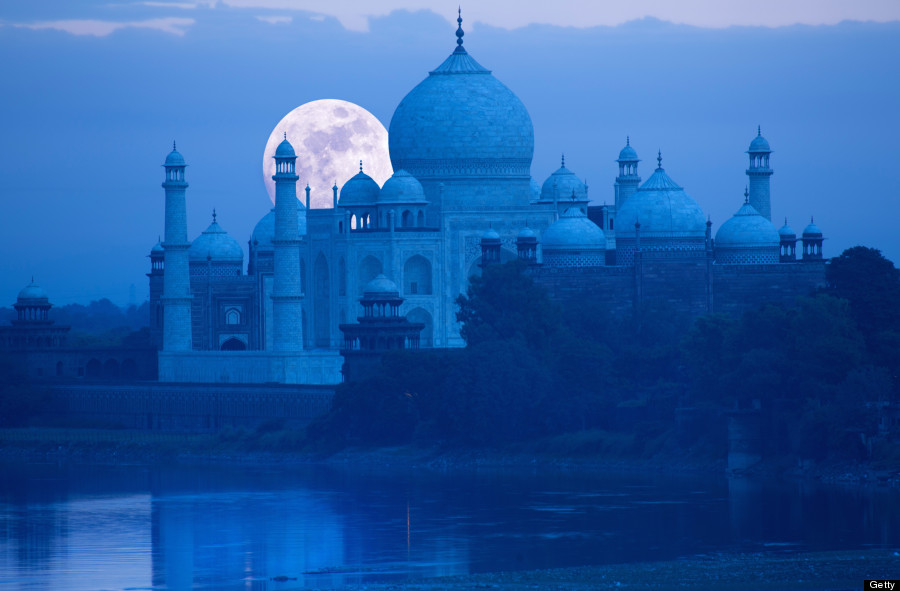
No one knows which architect to credit for the Taj Mahal, but everyone agrees Shah Jahan was probably a terror of a client. Still, his micromanaging seems to have paid off -- the white marble mausoleum is considered the zenith of Islamic architecture and a paradise on earth. Indeed, its inspiration is the view of heaven sketched out in the Quran, and the book’s imprint is everywhere, from inlaid calligraphic verses to the very notion that heaven is a garden.
But the star of the show is Mumtaz, the queen who died giving birth to the emperor's fourteenth son. Visual harmony was even sacrificed to protect her body. Look closely and you can see the four minarets that define the square around the mausoleum tilting ever so slightly, so if disaster strikes, they fall outward. Source: http://www.huffingtonpost.com/2014/10/23/india-great-architecture_n_6028176.html?utm_hp_ref=travel&ir=Travel
No comments:
Post a Comment